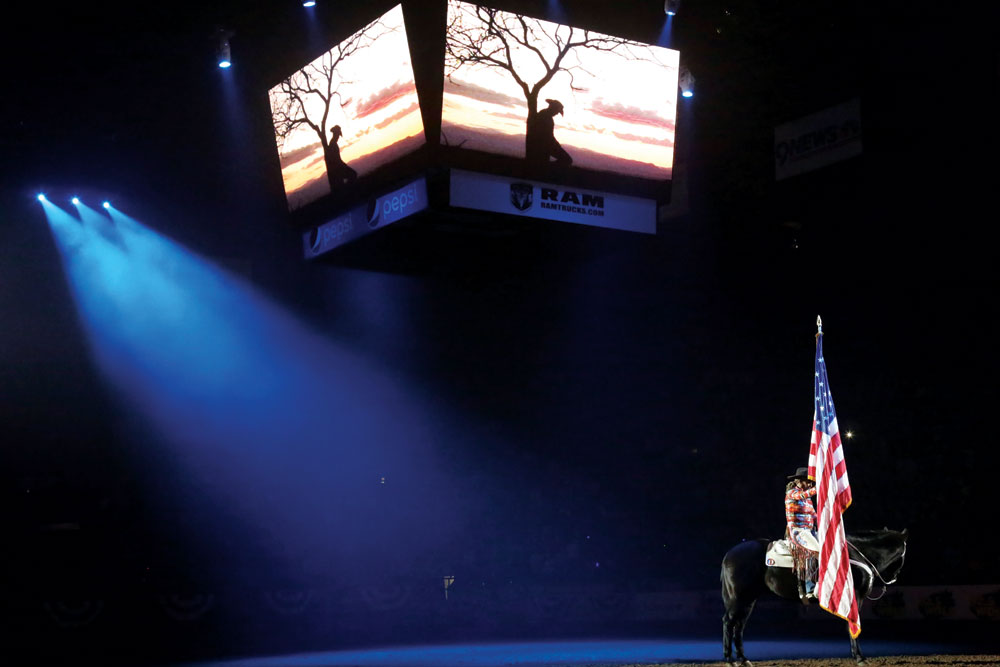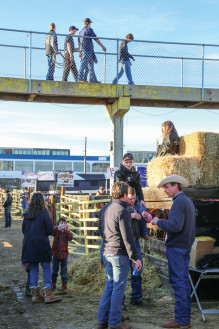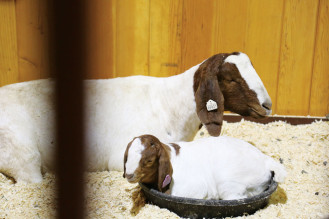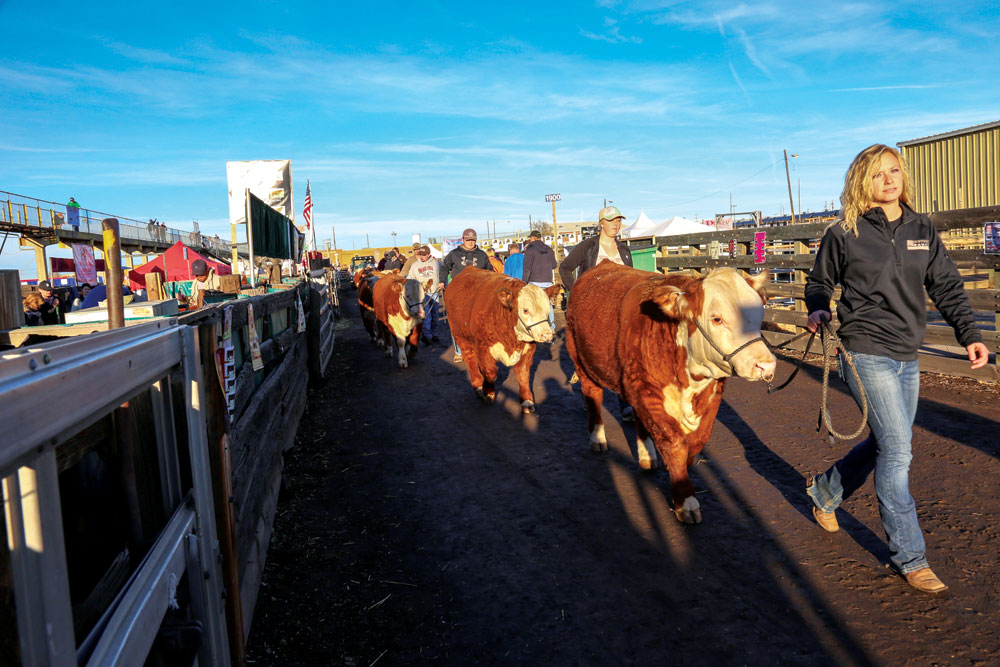There’s no “cow town” without cows.
Denver residents may be divided on whether their city should become a mega metropolitan area or preserve its roots that stretch back to the dusty, rootin’-tootin’ days of 100 years ago. But for 16 days in January, everyone agrees that the National Western Stock Show is a rip-roarin’ good time.
The 109th edition of the show kicks off January 9 and runs through January 24 at the historic complex at 46th and Humboldt streets.
It’s a community-wide event. Herds of little buckaroos and buckarettes, many outfitted in bandannas and hats that fall over their ears, are rounded up and led through the grounds, perhaps to come face-to-face with an Angus bull, rabbits, chickens and, maybe, a pink or blue cloud of cotton candy. Young men and women from outstate stroll the grounds to show off their form-fitting jeans and western wear. Their parents can wander through 900 booths and other spaces that offer household goods, clothing, jewelry and, if needed, bull semen—and visit the Coors Western Art Exhibit & Sale. Or rest their boots in the popular Cowboy Bar. Two rodeos a day give attendees a chance to whoop and holler just as their counterparts have done for almost a century.

The opening ceremony at the rodeo celebrates the glory of the old west.

In the bareback rodeo event, riders attempt to stay on the horse for a grueling eight seconds. This photo was taken at the MLK Jr. African American Heritage Rodeo at the National Western Stock Show.

The elevated walkway offers an overview of the stockyards behind the Expo Hall.
The show traces its roots to 1905 when a group of businessmen decided that what their town needed “to preserve the western lifestyle” was an agricultural show that would bring visitors, and their money, to the Mile High City. The first show, which opened on Jan. 29, 1906, to promote better breeding and feeding techniques to stockmen, lasted for six days and drew 15,000 visitors. A horse show was added in 1908; one of the nation’s largest indoor rodeos became an annual event in 1931, and the famed Westernaires riding team joined the show in 1954.
It isn’t just about entertainment; it’s also about money. Big money. Cattlemen (and women) pour in from around the country to show off and sell their animals, hoping to win one of the many best-in-show competitions for beef, pigs and sheep. Today, the stock show complex covers 120 acres, draws 18,000 entries to its horse show and continues to grow. In 2006, the National Western’s 100th anniversary, attendance reached a whopping 726,972. The largest opening-day crowd of 44,616 took to the grounds in 2008 and drew its largest single-day attendance that year with 68,610.

In between the main rodeo events, a special event called Mutton Bustin’ takes place where children ages 5-7 and less than 55 pounds ride sheep out of a chute and into the arena— which usually ends in biting the dust.

At the National Western Nursery in the Events Center Paddock, children have the chance to meet and learn about farm animals.
Many Coloradans equate the stock show with frigid temperatures, but Billy Saul, the late public-relations man for the show, was fond of reminding would-be visitors, “There is no such thing as Stock Show weather.”
The National Western is on the brink of a new era. In November, Denverites voted to extend indefinitely a 1.75 percent tourism tax on hotels and car rentals to raise $476 million of a projected $778 million cost for construction and improvement—river cleanup, preservation, public transportation and the creation of art and cultural spaces. It’s also expected to rejuvenate the long-neglected neighborhoods around it.

A stockshow visit should include some time in the stockyards behind the Expo Hall.
Denver Mayor Michael Hancock, whose administration threw its full weight behind the proposal, told the Denver Business Journal, “It’s a big number but we have to keep it in perspective with the city’s role for being the catalyst in reconnecting the neighborhoods” with “a new entertainment, education and tourist attraction.”
Dick Kreck was a longtime Denver Post editor and columnist. He asked that his writing fee be donated to the children’s program at the local library.




0 Comments